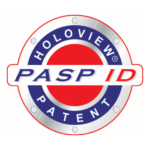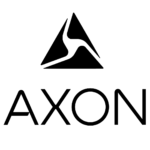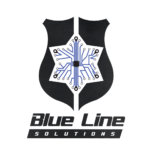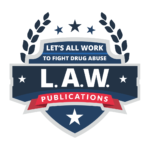
Risk Management
2024 | SUMMER
Good or Lucky?
Assessing Law Enforcement Driving Behavior for Future Safety Performance
Natalie Sellers
Risk Management
2024 | SUMMER
Good or Lucky?
Assessing Law Enforcement Driving Behavior for Future Safety Performance

Natalie Sellers
In today’s work environment, police leaders are expected to not only keep the public safe but also create a safe working environment for their officers and employees. This includes a broad spectrum of issues including adequate staffing, safety procedures, well-maintained equipment, and ongoing training. Of all the threats and dangers officers face, vehicle operations are one of the most dangerous. Automobile crashes and being hit by cars are the leading causes of police officer injuries and deaths 1
In addition, the leading cause of liability, automobile insurance, and workers’ compensation claims are linked to vehicle operations.
Because of this, department personnel must recognize vehicle operations as an officer-safety issue. Officer-involved crashes should never be described or viewed as a ‘cost of doing business’. Simply responding to these incidents, rather than focusing on preventing them, is no longer considered an effective approach for leaders. The absence of accidents or injuries does not equate to the presence of safety. This perception often lulls staff into thinking nothing will ever happen. Does this make us good or lucky?
It is essential leaders create an organizational culture that utilizes a proactive approach to identify potential threats to officer safety and initiate steps to mitigate these threats. To accomplish this, leaders must challenge the status quo and focus on continuous improvement.
The purpose of this article is to provide a structured eight-step process to evaluate and improve officers’ driving. To support this process, emphasis will focus on the importance of operational and supervisory oversight as well as ongoing fleet maintenance, conducting root cause analysis, and accident review boards.
Assessing officers’ driving behaviors enables departments to make decisions grounded on data instead of reacting to an incident. Accurately evaluating individuals’ driving abilities and habits requires a structured approach, based on established standards, to support ongoing feedback and training.
1. Define the Skill Set:
The first step is to specifically identify the criteria and expectations for proficiency in each skill. To accomplish this, clearly define the essential skills or competencies to be evaluated. In the world of emergency response driving, this could include technical or hard skills such as navigation aptitude, vehicle operations competency when it comes to operating different types of vehicles, driving on different surfaces, maneuvering in tight spaces, and driving in reverse. Soft skills such as patience, attention to detail, concentration, communication while driving, personal integrity, and responsibility to other drivers on the road.
2. Choose Evaluation Methods:
Once the skill sets are identified, the appropriate methods to effectively evaluate the identified skills must be identified. This could include:
- Observation: Individuals perform the driving tasks related to essential skills in real or simulated situations.
- Self-Assessment: Allow individuals to assess their skills using a standardized assessment tool or questionnaire.
- Peer Assessment: Gather feedback from field training officers, peers, and first-line supervisors who have firsthand knowledge of officers’ driving habits and abilities.
- Performance Metrics: Use objective metrics or measures to evaluate qualitative aspects of performance, such as following too close, hard braking or take off, or speeding. These metrics can and should be gathered during field training through observation and documentation. Then addressed with feedback and improvement plans.
- Video Reviews: Review video recordings of emergency responses and pursuits to assess the quality and depth of their skills.
- After Action Reviews/Accident Review Boards: These are used to identify the root cause of motor vehicle collisions. Findings from these reviews can assist with identifying poor driving behavior and facilitate discussions for improvement.
3. Establish Evaluation Criteria:
After the evaluation techniques are selected, develop clear criteria for evaluating driving skills, outlining the specific indicators or behaviors that demonstrate proficiency. These criteria should be objective, measurable, and relevant to the skill being assessed. Some examples could include narrative or commentative driving, collision avoidance, tailgating or hard braking, backing skills with simple cone course exercises, and the clearing of intersections during emergency response.
4. Collect Data:
When possible, gather data using multiple evaluation methods. It is important to utilize multiple sources of information to provide a comprehensive view of the individual’s skills. There are many ways to collect data when it comes to driving skills. Having field training officers document observations and provide feedback shows any new candidate the importance of safe driving. Having supervisors periodically review emergency response or pursuit provided and providing feedback to employees ensures that safe driving is expected throughout their tenure. Having claims analysis meetings with insurance providers to identify areas of exposure. Finally, using technology like Samsara, vehicle telematics, or GPS fleet tracking software will help identify and address agency exposures.
5. Analyze Results:
Evaluating the collected data can help to identify patterns with individuals or across assignments (i.e. patrol) as well as their strengths and areas for improvement. Compare the individual’s performance against the established criteria to determine their level of driving proficiency.
6. Provide Feedback:
Using the information developed, individuals should be given constructive feedback to highlight their strengths and areas needing improvement, as well as provide specific recommendations for development or additional training.
7. Set Goals:
Using the evaluation findings, work with individuals to establish realistic and achievable goals tailored for their development. This plan of action should include clear milestones and timelines for monitoring progress.
8. Monitor Progress:
This approach is not a one-and-done process. It is important to continuously monitor and evaluate individuals’ performance as well as provide ongoing support, feedback, and guidance. To ensure continued growth and improvement, adjust their goals and development plans as needed.
In addition to working with individuals, comprehensive assessments assist with a deep dive into systemic issues and patterns of behavior in the department.
Operational Policies and Procedures
It is important to note that statutory and case law set the minimum standards for vehicle operations. Policies and procedures ensure consistency and standardization in the agency’s operations that exceed minimum legal standards. Uniform rules and procedures clearly define expectations for behavior and performance and support individuals and teams to be held accountable for their actions.
Fleet Maintenance
Law enforcement agencies rely on a fleet of vehicles that are a significant investment and critical for their operations. Regular maintenance helps ensure vehicles are in optimal condition, reduces mechanical failures that could compromise safety on the road, and mitigates the risk of accidents and injuries. An effective program requires ongoing planning, inspections, repairs, and adherence to maintenance schedules.
Proper maintenance helps protect the agency’s investment by preserving the value of vehicles and maximizing their lifespan. In addition, well-maintained vehicles are more comfortable and enjoyable to drive. A well-maintained fleet also reflects positively on the organization’s reputation and enhances the organization’s image among the public.
Supervisory Oversite
Supervision involves overseeing the performance of drivers to ensure compliance with agency policies, safety, and traffic laws. As part of their responsibilities, supervisors may conduct regular audits or inspections to verify compliance and promptly address any issues. When issues are identified, taking timely and appropriate corrective action is critical. The leadership concept of “management through consequences”2 suggests supervisors’ actions can have a significant impact on an individual’s performance. Essentially there are four options available for supervisors:
- Positive Reinforcement:The supervisor does something positive to improve an individual’s behavior. For example, they can give an officer a verbal or written commendation
- Negative reinforcement:The supervisor does something negative to improve their behavior. This may take the form of counseling, remedial training, or verbal or written reprimand.
- Extinction:When this technique is utilized, the supervisor ignores the employee’s performance. When they ignore good behavior, it goes away. When they ignore bad performance, it gets worse.
- Punishment:The leader does something bad to stop the individual’s behavior. While this response commonly ranges from a letter of reprimand to termination, it is important to note that the follower’s perception of the action determines whether it is viewed as negative reinforcement or punishment. Because of this, it is important to communicate the intention of the action. This is not a one-time event but an ongoing process to sustain continuous improvement. What supervisors, from the chief executive to field training officers, focus their attention on is what gets done by combining effective supervision with timely feedback and corrective action, leaders can maintain higher standards of performance, safety, and efficiency within their organizations. This proactive approach also helps minimize risks, reduce costs, and enhance organizational effectiveness.
Root Cause Analysis
By looking beyond the symptoms, root cause analysis enables leaders to identify the underlying reasons events occur. This can be accomplished by reviewing a variety of sources of data (i.e. reviewing video recordings, downloading in-car black box data), conducting administrative investigations, and training to prevent future occurrences.
Once the root causes are identified, this information can be used to drive training as well as conversations with supervisors to effectively address issues. Throughout this process, it is incumbent on supervisors to monitor the effectiveness of corrective actions and ensure they produce the desired results.
Accident Review Board
Review boards play a vital role in promoting safety, preventing accidents, and improving overall effectiveness. The primary purpose of an accident review board is to thoroughly review accidents involving fleet vehicles. This includes examining the circumstances leading up to the accident such as the driver(s) actions, vehicle(s) conditions, and other relevant factors.
Using this information, the board should determine if the internal policies, procedures, or training were violated. They may also recommend training or policy changes to diminish or prevent future events. Accident review boards ensure accountability within the organization by holding drivers, supervisors, and other stakeholders responsible for their actions related to accidents. This may involve corrective action for drivers found to be negligent, as well as accountability measures for supervisors responsible for oversight and enforcement of safety protocols.
On a broader scale, this review board may seek to identify patterns or trends in accident data (common types of accidents, locations, times of day) and contributing factors (e.g., distracted driving, fatigue, poor road conditions).
By understanding these patterns, the board can initiate preventive measures to mitigate the risks of accidents. It is important to note how the board’s findings and recommendations are structured could adversely impact the governing entity’s liability. The accident investigator’s responsibility is to determine who is “at fault”.
Because internal findings of any review board can be discoverable in a lawsuit, it can become very problematic if their findings determine the employee was “at fault”. This is one of the primary reasons departments request an outside agency conduct the accident investigation.
Findings, such as this by an internal review board, can be easily manipulated to mean the employee was at fault for the event, and not purely in violation of policy or training that may have prevented the event. To avoid this, the internal review board should only rule whether the accident was “preventable” or “non-preventable” under policy provisions or preventable under training requirements making a strong argument that the review is limited to the internal policy and training provisions.
By continuously reviewing and analyzing accident data and implementing preventive measures, the accident review board contributes to the organization’s culture of continuous improvement in safety and risk management. This ongoing process helps the organization adapt to changing conditions, technologies, and regulatory requirements to maintain high standards of safety and minimize accidents.
In summary, vehicle operations is one of the most dangerous activities officers engage in daily. Everyone in the department must recognize operating a motor vehicle is an officer safety issue. To facilitate this process, leaders should engage in a deliberate process to evaluate and improve officers’ driving. This requires ongoing reviews of crash-related data to determine areas the agency can improve. In addition, supervisors must verify officers are operating their vehicles in a safe manner that complies with department procedures.
Finally, accident review boards are essential for thoroughly reviewing collisions and determining if they were preventable or not preventable. Collectively, these processes will provide a comprehensive process to support continuous improvement and a safer work environment for officers.
- “Causes of Law Enforcement Deaths”, National Law Enforcement Officers Memorial Fund https://nleomf.org/memorial/facts-figures/officer-fatality-data/causes-of-law-enforcement-deaths/ Accessed, May 14, 2024.
- Howard T. Prince II, John F. Halstead, and Larry M. Hesser, Leadership in Police Organizations, 2nd Edition, Vol. 1, International Association of Chiefs of Police, 2003, pp. 119 – 131.

David Blake

Duane Wolfe

Guler Arsal

Joel Suss

Natalie Sellars
Natalie Sellars has served as a Senior Law Enforcement Risk Consultant with Local Government Risk Management Services (LGRMS) for the past 10 years. She holds a Bachelor of Arts in Criminal Justice from Augusta State University and a Master of Arts in Criminal Justice from Troy University. Previously she served as a parole officer, academy instructor, and Assistant Chief with the Georgia State Board of Pardons and Paroles.












